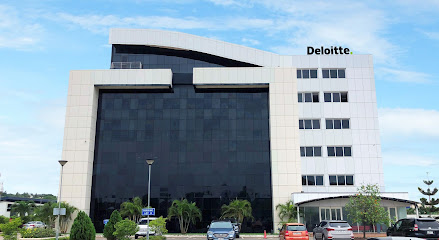Deloitte’s Yaw Appiah Lartey Backs 2026 Macroeconomic Targets but Flags Discipline and Funding Risks
Partner for Strategy and Partnerships at Deloitte Ghana, Yaw Appiah Lartey, has described the macroeconomic targets set in the 2026 Budget as “achievable,” stressing that government’s projections are moderate and within reach provided fiscal discipline is maintained.
Speaking on Citi TV’s Point of View on Monday, November 17, 2025, Mr Lartey argued that the economic performance recorded so far in 2025 suggests that next year’s targets are well within scope.
According to him, government has already posted a stronger-than-expected GDP outturn in the first half of 2025, with growth estimated at 6.3 percent—significantly above the 4 percent target for the year.
“If in the first half your GDP goes to about 6.3 percent and you are projecting to end 2026 at about 4.8 percent, these are not ambitious targets,” he stated. “They are achievable unless we are not disciplined in one or two areas.”
He further noted that the projected fiscal deficit remains below the Fiscal Responsibility Act’s 5 percent ceiling, adding that continued IMF oversight enhances the likelihood of meeting the target.
On inflation, he highlighted government’s projection of 8 percent (±2) for 2026 as reasonable given the latest consumer price data.
“Inflation reported for October is 8 percent, far ahead of what was projected for the year,” he said. “Ending 2026 at the same point is achievable.”
Capital Expenditure Allocation Signals Major Shift
Mr Lartey, however, pointed to a significant shift in expenditure patterns, particularly government’s decision to raise capital expenditure (CAPEX) allocation to roughly 19–20 percent in 2026—the highest level in five to six years.
He explained that CAPEX had averaged between 11 and 13 percent in recent years, but government now intends to “go big” in 2026 to stimulate productivity.
“What it means is that government is likely to spend a lot more in 2026. That comes with risks—higher activity, increased demand, and possible inflationary pressures. So government is being mindful.”
The Deloitte partner observed that the cautious target-setting is partly influenced by this expected spike in spending, adding that authorities could have opted for more aggressive macro targets.
Underspending in 2025 Creates Fiscal Space
Reviewing the 2025 expenditure performance, Mr Lartey disclosed that government recorded an overall underspend of about 6.7 percent, with shortfalls across almost all key expenditure lines.
These include:
- 8% underspend in interest payments
- 3% underspend in grants and subsidies
- 9% underspend in capital expenditure
- 7% underspend in goods and services
Compensation of employees, however, recorded an overspend due to wage pressures and labour union agreements in the education and health sectors.
He described the CAPEX underspend of 36.9 percent as “remarkable,” noting that improved scrutiny contributed significantly to the outcome.
Debt Restructuring Frees Up Fiscal Space
Mr Lartey emphasised that the domestic debt exchange programme continues to yield tangible benefits for the fiscal framework.
Prior to restructuring, interest payments consumed nearly 28 percent of total expenditure. However, the figure has now declined to 19 percent, creating space for larger allocations to CAPEX and social programmes.
“That is why we are seeing a significant allocation to capital expenditure,” he explained. “When you are going through debt distress, there is very little you can do in other areas.”
Major Infrastructure Commitments and Funding Risks
The consultant noted that government has outlined several major infrastructure commitments for 2026, including the first phase of the Accra–Nsawam–Koforidua–Marseille Express Highway, expected to be executed over three years.
A major component of the 2026 CAPEX allocation—about GH₵16 billion out of GH₵57 billion—is dedicated to the “Big Push” programme focusing on strategic roads and bridges.
Other allocations include:
- GH₵4.45 billion for bridge maintenance and rehabilitation
- GH₵2 billion for rural electrification and energy access
- About GH₵1.5–2 billion for water, sanitation, agriculture and rural telephony projects
However, two key risks were identified:
- Sustainable Funding – Many of the projects hinge on strong revenue mobilisation and external financing from development partners such as the African Development Fund (ADF).
- Operational Efficiency – Without effective value-for-money controls, projects may stall or fail to deliver expected economic returns.
Mr Lartey welcomed government’s plan to establish a value-for-money department to strengthen oversight.
“We should spend money on things that add value to GDP,” he said. “If we implement these projects effectively, the GDP base grows, and your debt-to-GDP ratio improves.”










